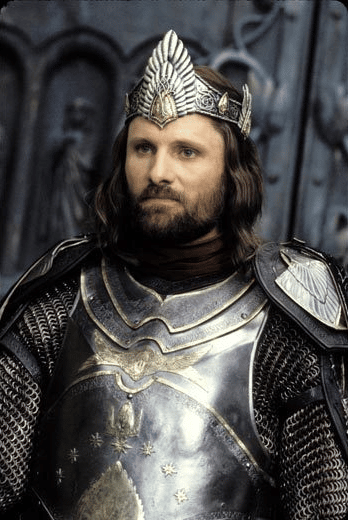
All that is gold does not glitter,
Not all those who wander are lost;
The old that is strong does not wither,
Deep roots are not reached by the frost.
From the ashes a fire shall be woken,
A light from the shadows shall spring;
Renewed shall be blade that was broken,
The crownless again shall be king. — J.R.R. Tolkien, The Fellowship of the Ring
The poem above is quoted twice in the first book of The Lord of the Rings trilogy. It is about Aragorn. It speaks about the King who will return. Looking through the lens of Aragorn, we also see the Christ who will return to us. Tolkien was quite deliberate in setting up the scenario, where we can just imagine the victorious King establishing the new Heavens and Earth after winning a victory over the enemy.
But, if you know Tolkien at all, you realize that the trilogy has more than one Christ figure within it. Certainly, this poem speaks strictly to the Aragorn Christ figure, but he is not the only character that reflects some very Christ-like characteristics. Gandalf reminds one of the Scriptures concerning the Ancient of Days. But if Aragorn tells us that the humble Messiah will eventually come back as the powerful King; then Frodo reminds us that Jesus’ Passion was an utterly necessary part of the story. Hell had to be riven, but Frodo reminds us of the intense suffering that had to take place in order for Hell to be riven. But Frodo could not really give us a full picture of the suffering servant. It takes the servant attitude of Samwise (Sam) coupled with the suffering of Frodo to bring out a fuller picture of the Suffering Servant.
So here we have a fuller picture of Christ in the Lord of the Rings trilogy. Gandalf, who functions as the Prophet/Priest, “I watched till thrones were put in place, And the Ancient of Days was seated; His garment was white as snow, And the hair of His head was like pure wool.” Aragorn, the King who “made Himself of no reputation, taking the form of a bondservant, and coming in the likeness of men.” Frodo/Samwise, who image for us the Suffering Servant, “Behold! My Servant whom I uphold, my Elect One in whom My soul delights!” And, at the end you see that, “the Ancient of Days came, and a judgment was made in favor of the saints of the Most High, and the time came for the saints to possess the kingdom.” Notice that it is Gandalf who crowns the King, and then the good possessed the new Kingdom of Gondor.
There is some wonderful allegory in the Lord of the Rings trilogy, and yet it is written in such a way that you do not have to know the allegory to thoroughly enjoy the book. But, here is a challenge for you. Read Lord of the Rings one more time and look for the allegories and allusions. It will certainly increase your “like” and respect for the depth of writing that is found there.



Fr. Earnesto: I have done that. I first read the lord of the rings with my father’s sister in 1958, and we looked for the Christ figures. I have since read the Hobbit And the Lord of the Ring and the Simmilarian twice. Much like the Bible, or perhaps as a “shadow” thereof each reading brings some new revelation.
This is a rather wonderful walk on that road 🙂
https://www.ignatius.com/Products/PHILTO-P/the-philosophy-of-tolkien.aspx
And don’t forget Gollum. One of my fannish contacts makes a case that Gollum is actually another of the heroes in the saga, a TRAGIC one.
And a little image that came to mind after I’d detoxed from The Gospel According to Hal Lindsay:
Remember that verse used to back up The Rapture? The one about “meeting the LORD in the air” at the Second Coming? Well, if the “in the air” was believed at the time of writing to be the Devil’s home turf, this means the King Returns in what was the center of the Enemy’s realm. It would be like Aragorn Elessar Telcontar being crowned King not in Minas Tirith, but standing on the ruins of Barad-Dur.
I had not thought of that. I might do a post on Gollum then.